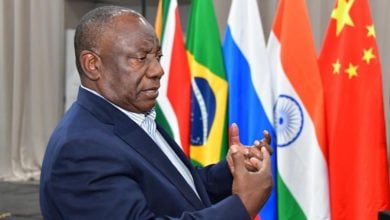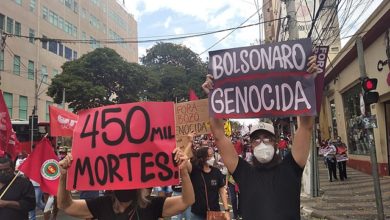French workers strike against privatization

Hundreds of thousands of French workers went on strike on Oct. 4, a day that was dubbed “Black Tuesday.” The country’s largest unions are mobilizing to protest further government cutbacks that seek to shift the burden for health care and retirement onto the shoulders of the working class.
French Prime Minister Dominique de Villepin’s administration is seeking to increase privatization efforts. The administration has initiated an overall attack on the working class. Many people have recognized the historical significance and character of the government schemes. “All of the rights that our ancestors took centuries to acquire are being squeezed,” a French worker told the AP.
The national strike comes on top of a bitter labor dispute on the Mediterranean island of Corsica that exemplifies the class struggle throughout France. In response to government plans to privatize a main ferry operating company, workers struck and blockaded the seaports Ajaccio and Bastia. The French government deployed troops to the area Oct. 1 and put an end to the blockade, but the struggle over privatization is far from over.
Unfulfilled promises spur protests in Brazil
Brazil’s Landless Workers Movement (MST) launched a wave of protests and takeovers on Sept. 25, possibly signaling a new phase of their struggle for land and justice. In the action, dubbed “Red September,” landless workers stormed land reform offices, blockaded nine interstate highways and took over many large ranches and latifundios. The government of President Ignacio “Lula” da Silva has not fulfilled its promise to redistribute land to 400,000 families. Around 160,000 families have received land, but an estimated 130,000 live in makeshift camps in the countryside or favelas (squatter settlements) in the cities.

On Oct. 6, the Metalworkers Union at the Volkswagen plant in Sao Carlo went on strike in protest of company plans to cut back on profit-sharing formulas. Six hundred workers had recently been forced to resign from the company as well.
Nepal: Protests mount against monarchy

The ongoing social crisis in Nepal is continuing to draw in broader masses of people. The ceasefire between royalist and revolutionary forces has repeatedly broken down, and the government continues to crack down on any form of dissent. In one of the largest demonstrations since King Gyanendra usurped absolute governmental power in February, 6,000 people took to the streets of Katmandu on Sept. 13. Police arrested close to 600 people, including leading political party leaders. Daily protests continue.
Since the “ceasefire” announced in early September, government troops and the People’s Liberation Army clashed on Sept. 24 and 25. It has become clear that the Royalist regime does not want peace, and aims to crush the insurgency, which is led by the Communist Party of Nepal (Maoist).
Photo: Tschaen/Sipa
Photo: Carlos Casaes/Agencia O Globo
Photo: Gopal Chitrakar




